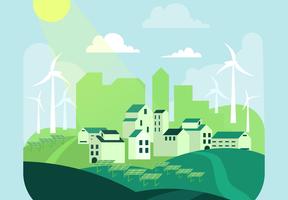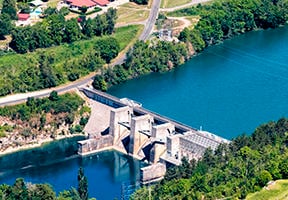Emerging Economies: Growing Energy Needs
10 min read
Emerging economies like China, India, Brazil and soon Africa have overtaken developed countries in driving energy demand, says the . Renewable energies account for an increasingly large share.

© AFP PHOTO - BIJU BORO - Installing reliable power grids is often a major challenge in some tropical countries, like here in India.
The has released a central scenario showing a 37% increase in global demand by 2040. Two-thirds of this growth in demand will come from non-OECD countries, with China leading until the mid-2020s before India picks up the slack as from 2025. Meanwhile, demand for energy in sub-Saharan Africa is expected to rise 80% by 2040, fuelled in particular by strong demographic growth that will see the population double to almost 1.8 billion.
Despite this strong growth, however, non-OECD countries will still consume far less energy per capita than their rich-world counterparts did in the 1970s (at comparable levels of GDP per capita).1
Electricity: National Grids, Local Solutions
Providing access to requires a mix of centralized, large-scale grids and local solutions based on microgrids and stand-alone equipment.
For example, Ethiopia is currently constructing what will be the biggest hydroelectric dam in Africa on the Blue Nile. In Vietnam, the government has multiplied energy access by 20 in the last 35 years through a proactive industrialization policy. And several countries in Asia and Africa, like South Africa, are investing in .
At the same time, developments in solar photovoltaics (PV) and technical improvements in how is used are leading to decentralized, stand-alone solutions. Kenya for example has made this dual approach the basis of a far-reaching program to extend the electricity grid out from the major cities and into nearby rural areas. Meanwhile, in remoter areas, it is developing local systems running on biomass, micro-hydro, solar PV, energy and conventional fuels like .
The World Bank is supporting these efforts to develop long-distance energy transmission and decentralized solutions.3
Putting the Able in Renewables
For the United Nations (U.N.), increasing access to energy should be tied to global efforts to reduce greenhouse gas emissions and mitigate . It hopes progress in this area will help double both global levels and the share of renewables in the world .
Emerging economies are actively deploying renewable energies in their quest to fuel their development by all possible energy sources, gas and nuclear energy included. Sub-Saharan Africa is expected to rely on renewables, including hydropower, to provide half of the growth of its generation capacity, which is set to grow fourfold by 2040. China and India have focused more on wind and solar power, while Brazil has preferred hydropower and biomass (organic waste, , etc.).
Urbanization Poses a Challenge
Developing countries too are being confronted with the global problem of rapid urbanization, as their mostly rural populations flock to cities. A U.N. report found that an extra 2.5 billion people will live in urban areas by 2050, bringing the total to 66% of the world population (up from 54% today). India, China and Nigeria will be the hardest hit by rural flight.
The trend will see continued growth in major world cities but also, in a new phenomenon, an increase in the number of small- and medium-sized cities, says the U.N. Urbanization implies much higher energy intensity. In the developed world, one billion watts are needed for every one million inhabitants in cities. On the other hand, urban concentration in the developed world is also more energy efficient than a spread out population – provided it is well managed, of course. Infrastructure has (usually) preceded mass urbanization in developed countries, whereas cities in developing ones are trying to catch up.






















